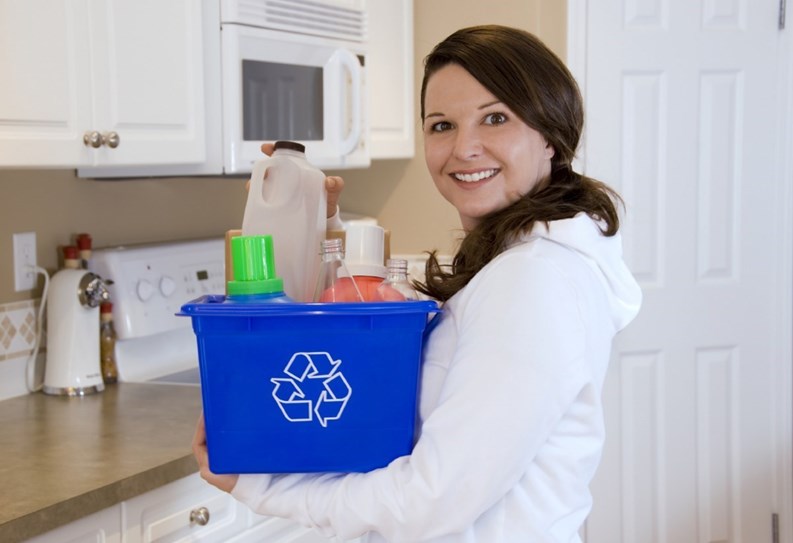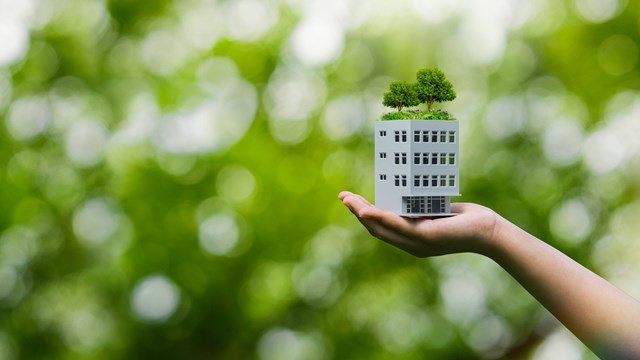Everybody knows that New York City's apartment buildings generate a whole lot of trash. In fact, according to the New York Department of Sanitation (DSNY), the average New York City resident discards nearly four and a half pounds of waste each day, or more than three-quarters of a ton per year. Multiply that by the number of residents in your building, and the sheer volume of waste gets pretty staggering.
In order to address the amount of trash generated by the city's apartment buildings, the DSNY has come up with an its Apartment Building Recycling Initiative, or ABRI. It's a program designed to empower building boards and management to educate residents about the "Three R's": Reduce, Reuse, Recycle.
According to the DSNY, "A volunteer-based apartment building recycling improvement program is a great way to encourage more recycling in the city through hands-on education and cooperation among DSNY, apartment building residents, and building managers."
How it Works
If you're interested in enrolling your building in the ABRI program and have your management company on-board, you can simply go to the DSNY's website (www.nyc.gov/wasteless) to fill out an enrollment form. If your building satisfies the program's other requirements, you'll be invited to attend a training session where you'll receive a welcome packet full of helpful information about improving your building community's recycling efforts.
The program's enrollment requirements are pretty straightforward: the primary enrollee must be at least 18 years of age, the building must have more than four residential units and must currently receive DSNY collection. The building's managing agent or company must submit a signed form agreeing to work cooperatively with residents and the DSNY to improve recycling efforts in the building, and a building representative must take part in at least one ABRI training session. (Training sessions are generally held every two months in Lower Manhattan from 5:30 to 8:30 p.m. See the DSNY website for more details.)
If for some reason your building administrators aren't interested in participating in the ABRI program, individual residents can still learn more about recycling and spread the word to friends and neighbors by becoming "ABRI Friends." ABRI Friends attend the same training sessions as full-fledged participants and receive email updates about recycling, although they don't have authorization to volunteer in their buildings.
Once a building is fully enrolled, the DSNY will contact the building and the management to confirm enrollment and the schedule of training sessions. "Our Sanitation Outreach Coordinators will visit your building to see how recycling program is currently set up. After our site visit, we'll provide you with personalized suggestions to improve your building's recycling setup and send— free of charge—enough decals, posters, refrigerator magnets, and other materials to help every tenant in your building learn how to recycle to the max."
The Benefits
Aside from just doing something positive for the city and the environment, buildings participating in ABRI have direct access to a DSNY recycling expert, whom they can contact with questions, or to get recycling pointers and support. Also, says the DSNY, "Participants will also receive regular updates with helpful information on changes to the program or special recycling collection events, so they can keep their buildings well informed."
For more information, or to enroll in ABRI, just go to www.nyc.gov/wasteless and follow the prompts to the online enrollment form. Or, if you'd like to speak to someone at DSNY directly, you can call 212-514-7812.
In the Meantime…
For buildings and individuals alike, the DSNY has specific guidelines about what can and cannot be put into recycling bins. Here's the breakdown:
PAPER & CARDBOARD
rYES—These items should be placed in your building's recycling bins:
• White, colored, and glossy paper (staples OK) mail and envelopes (window envelopes OK) wrapping paper (remove ribbon and tape) smooth cardboard: food boxes (remove inside & outside plastic wrappers) shoe boxes, tubes from paper towel and toilet paper rolls, cardboard from product packaging, paper bags, cardboard egg cartons and trays, newspapers, magazines, and catalogs, phone books, softcover books (paperbacks, comic books, etc.—no spiral bindings), corrugated cardboard (flattened boxes).
NO— These items should be placed in the regular trash:
• Hardcover books, napkins, paper towels, or tissues, soiled paper cups or plates, paper soiled with food or liquid, paper with a lot of tape and glue, plastic- or wax-coated paper (candy wrappers, take-out containers, etc.), photographic paper.
Place all paper together in CLEAR bags, or in any bin labeled with green recycling decals or marked " MIXED PAPER." (Or place in the white dumpster for paper recycling, if your building has one.)
Flatten and bundle large pieces of corrugated cardboard and tie with sturdy twine, or break into small pieces to place in your recycling bin or bag. (Or place loose in the white dumpster for paper recycling, if your building has one.)
BEVERAGE CARTONS, BOTTLES, CANS, METAL & FOIL
qYES—These items should be placed in your building's recycling bins:
• Metal cans (soup, pet food, empty aerosol cans, dried-out paint cans, etc.), aluminum foil wrap & trays, household metal (wire hangers, pots, tools, curtain rods, small appliances that are mostly metal, etc.), bulk metal (metal furniture, cabinets, large appliances, etc.), glass bottles & jars only, plastic bottles & jugs only, milk cartons & juice boxes (or any such cartons and asceptic packaging for drinks, like ice tea, soymilk, soup, etc.)
NO—These items should be placed in the regular trash:
• Any plastic items other than bottles & jugs (such as deli and yogurt containers; plastic toys, cups, bags, wrap, etc. — if it's not a bottle or jug, DON'T put it in the recycling bin), any glass items other than glass bottles & jars (mirrors, lightbulbs, ceramics, glassware, etc.), Styrofoam (cups, egg cartons, trays, etc.), batteries
• Empty and rinse containers before recycling. Place all together in CLEAR bags, or in any bin labeled with blue recycling decals or marked "BOTTLES & CANS." Remove caps & lids. Place METAL caps & lids in the recycling bin; put plastic caps & lids in the garbage.
BULKY TRASH
qYES—These items should be placed alongside your building's recycling:
• Furniture and appliances that are predominantly metal (unless they contain CFC gas — see below) and are too big for your recycling container or clear bag — such as washing machines, metal filing cabinets, box springs, or water heaters — should be placed beside the recycling container on your regular Recycling Day. NO—These items should be placed alongside your building's trash:
• Non-recyclable trash that is too big for your garbage container or bag — such as mattresses, lumber, TVs, or debris from small construction or garden projects. These items may be placed at the curb on any regular garbage collection day.
The Department of Sanitation will collect up to six bulk items from one address. There are special regulations for wood from trees. For more information, see "Bulk Collection" on the DSNY website.
APPLIANCES WITH CFC GAS
Before discarding appliances containing CFC gas, or freon — such as refrigerators, freezers, air conditioners, or dehumidifiers — you must schedule an appointment to place the item at the curb for CFC recovery. You can make an appointment on the DSNY website or call 311. For safety reasons, the law requires doors to be removed from refrigerators and freezers before placing at the curb.
With issues like global warming, climate change, and environmental conservation in the news almost daily, lots of people are looking for ways to reduce their impact on their immediate environment. In a city the size of the Big Apple that might seem like a nearly impossible task, but thanks to easy-to-follow guidelines and programs like ABRI, New Yorkers can help the environment—one building at a time.
Hannah Fons is an associate editor with The Cooperator.







Leave a Comment